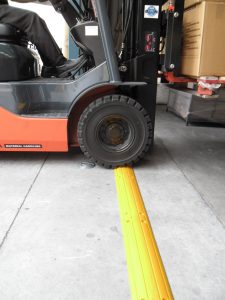Keep Spills Far Away When You’re Driving Trucks!
Australia would come to a standstill without trucks, and this is just a fact. So, when you hit the road, you want to transport your cargo safely, without interruptions from something as dangerous as spills. This is why many truck drivers consider taking spill kits along with them for the ride.
Common Spills on the Road
Break Downs:
your truck breaks down and requires immediate repairs, you can easily cause a mess for yourself and the environment due to oil and hydraulic fluid to name a few.
Hydraulic Issues:
Damaged hydraulic hoses can cause messes that include leaks to larger spills and it’s important to be able to stop a spill and address the hazard safety as these liquids are not good for people or the environment. This can be done with the appropriate spill kit.
Load Spills:
Whatever you may be transporting, it’s likely that you’re going to see a spill happen whether it be inside your truck or outside your truck. If you want to clean up these spills anywhere, a spill kit in your truck can come in handy.
Driving Accidents:
When you drive for a living, you know that accidents happen no matter how hard you try, and in the event of an accident happening, you can see great risks occurring with your truck and other vehicles on the road due to spilled chemicals. Mediate this risk with spill kits.
Spill Kits Reduce Response Time
Essentially, spill kits give you all the things you need to handle spills as soon as they occur, and this allows you to remain safe no matter where in Australia you might be. Essentially just having a spill kit on hand gives you a great safety net and is half the battle already fought. From there the kit contains things such as personal protective equipment like gloves, and goggles to keep you safe, absorbents and booms to contain the spill and disposable bags to hold the chemical that has been absorbed in the absorbent so it can be disposed of in a safe manner. Altogether, the kit is made to make life easier when things go wrong, and although as a truck driver you aren’t always legally in charge of your cargo, truck and any leaks and spills that may happen, it’s a moral consideration towards the Australian environment and your fellow drivers on the road, to manage hazards yourself, without needing to call emergency services.
Spill Station Can Help!
When unexpected things happen, you will want to get your spill kits from a provider who you can put your trust in, to only provide you with the best, every single time. This is why Aussie vehicle operators enjoy working with Spill Station Australia.
Spill Station is an Australian distributor of safety solutions for businesses all over the country, they pride themselves in making safety easier to manage, and this goes for truck drivers too, with their vehicle safe 20-30L spill kits, made to be small and transportable in bags.

